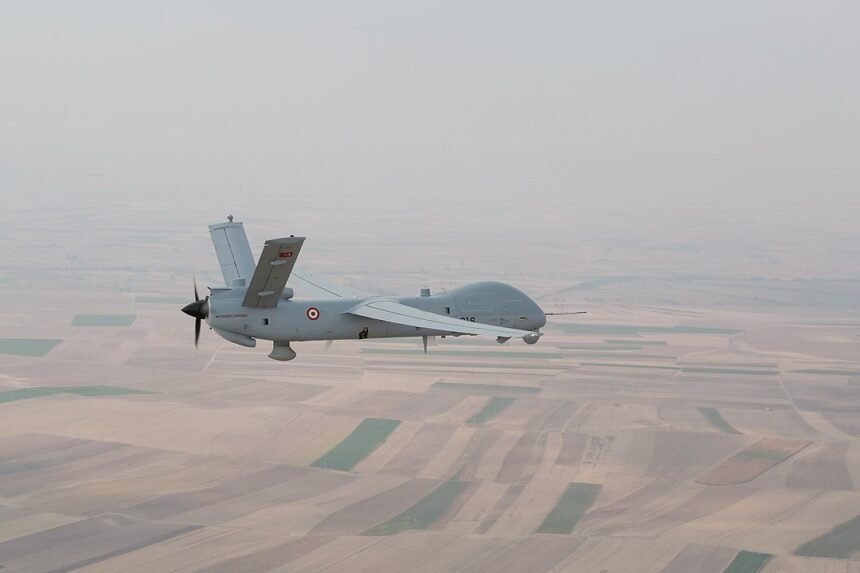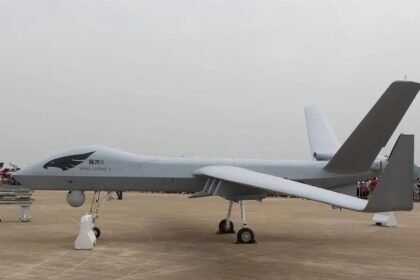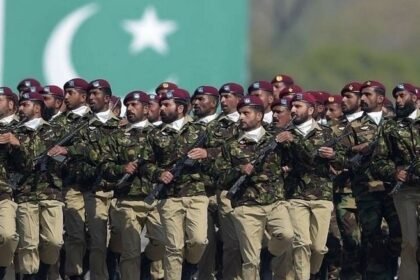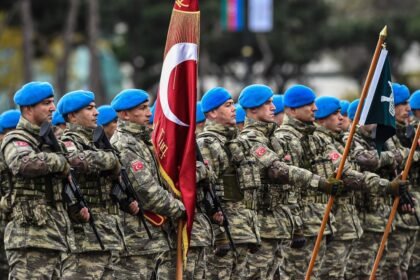The Anka-S is a state-of-the-art unmanned aerial vehicle (UAV) that has emerged as a key player in modern military operations. Developed by Turkish Aerospace Industries (TAI), the Anka-S is an advanced variant of the Anka UAV family, designed for various combat missions, surveillance, reconnaissance, and target acquisition. This article delves into the pricing, proven combat record, capabilities, and global impact of this remarkable UAV.
Price
While the exact price of the Anka-S varies depending on configuration, package deals, and export agreements, its base unit cost is estimated to range between $20 million to $30 million. These figures can rise with the inclusion of additional sensors, payloads, and ground control systems. The competitive pricing of the Anka-S, when compared to other similar UAV systems, makes it a cost-effective solution for countries seeking to enhance their defense capabilities with cutting-edge technology.
Turkey has also leveraged its indigenous defense industry to keep the cost of production relatively lower than Western counterparts like the U.S. MQ-9 Reaper or Israel’s Heron UAVs, making the Anka-S attractive to a broad range of countries.
Technical Specifications
The Anka-S is packed with advanced technology designed to support various missions. Below are the detailed technical specifications:
- Length: 8.6 meters (28.2 feet)
- Wingspan: 17.6 meters (57.7 feet)
- Height: 3.25 meters (10.7 feet)
- Maximum Takeoff Weight (MTOW): 1,600 kg (3,527 lbs)
- Payload Capacity: 200 kg (440 lbs)
- Operational Altitude: 30,000 feet (9,144 meters)
- Endurance: Up to 24 hours
- Maximum Speed: 217 km/h (135 mph)
- Cruising Speed: 200 km/h (124 mph)
- Range: Over 250 km (155 miles) line-of-sight, with satellite control (SATCOM) extending its range to beyond 1,000 km (621 miles)
Payload and Armament
The Anka-S is versatile in its payload options and can carry both sensors for surveillance and weapon systems for combat operations. Here’s a breakdown of its capabilities:
- Surveillance and Reconnaissance Payload:
- Electro-Optical/Infrared (EO/IR) System: High-resolution cameras for day and night operations.
- Synthetic Aperture Radar (SAR): Enables detection of ground targets in all weather conditions, including through cloud cover or foliage.
- Signals Intelligence (SIGINT): For electronic warfare and intelligence gathering.
- Laser Designator: For target marking and guiding laser-guided munitions.
- Armament:
- MAM-L (Miniature Munition): A precision-guided bomb developed by Turkish defense firm Roketsan. It’s designed to minimize collateral damage and can strike stationary or moving targets.
- Anti-Tank Missiles: The Anka-S is capable of carrying anti-tank guided missiles, enhancing its ability to engage armored vehicles and fortified positions.
- Other Payloads: The UAV can also carry Smart Micro Munitions (MAM-C), which are lightweight, small-caliber precision-guided bombs for use in urban warfare scenarios.
Communications and Control Systems
One of the standout features of the Anka-S is its satellite communication (SATCOM) capabilities, which allow for beyond-line-of-sight operations. Unlike UAVs that rely solely on line-of-sight radio control, the Anka-S can operate at greater distances, thanks to its satellite link, making it ideal for long-range reconnaissance and strike missions.
- Control Range: Over 1,000 km with SATCOM.
- Autonomous Flight: The UAV can conduct autonomous takeoffs, landings, and route navigation, reducing the need for operators to intervene manually.
- Data Link: Secure communication links ensure real-time data transmission to command centers, including live video feeds, targeting data, and surveillance footage.
Engine and Performance
The Anka-S is powered by a turbocharged piston engine, providing the necessary power for extended endurance missions at high altitudes.
- Engine Type: Thielert Centurion 2.0 or PD170 engine.
- Fuel Type: Jet fuel or aviation gasoline.
- Fuel Capacity: Designed to carry enough fuel for missions lasting up to 24 hours.
This engine configuration ensures that the Anka-S can perform long-duration missions, making it well-suited for intelligence-gathering operations in remote or hostile areas.
Autonomy and AI Integration
The Anka-S features significant advancements in autonomy, incorporating Artificial Intelligence (AI) for improved target identification, mission planning, and flight control. The UAV’s autonomous systems allow for:
- Automated Target Detection and Tracking: AI algorithms enable the UAV to autonomously detect, classify, and track potential targets without constant operator input.
- Real-Time Decision Making: AI-driven decision-support systems help operators assess threats, recommend actions, and execute missions more efficiently.
- Autonomous Flight Capabilities: The Anka-S can conduct entire missions autonomously, from takeoff to landing, while adjusting its flight path in response to changing conditions or threats.
Capabilities
The Anka-S UAV boasts a variety of cutting-edge capabilities that make it highly effective in modern warfare:
- Long Endurance and Range:
With an operational altitude of 30,000 feet and an endurance of up to 24 hours, the Anka-S can carry out extended surveillance and combat missions, covering vast areas and remaining in the air for prolonged periods without the need for refueling. - Advanced Payloads:
The Anka-S is equipped with electro-optical (EO/IR) cameras, synthetic aperture radar (SAR), and signals intelligence (SIGINT) systems, providing high-quality imagery and data in all weather conditions. These sensors enable operators to identify, track, and eliminate targets with precision. - Armed Capability:
Capable of carrying a variety of payloads, including guided bombs (like MAM-L) and anti-tank missiles, the Anka-S can engage both ground and moving targets. Its integration with precision-guided munitions allows for minimal collateral damage, making it ideal for urban combat environments. - Satellite Control:
One of the defining features of the Anka-S is its satellite communication (SATCOM) system, which allows for beyond-line-of-sight operations. This increases its operational range far beyond that of standard UAVs controlled via line-of-sight radio frequencies, providing greater flexibility for missions conducted over long distances or in hostile environments. - Autonomy and Artificial Intelligence:
The Anka-S incorporates artificial intelligence (AI) and autonomous flight capabilities, allowing it to carry out complex missions with minimal human intervention. Its AI algorithms assist in identifying and tracking targets automatically, improving decision-making and reducing the workload for operators.
Global Impact
The global impact of the Anka-S is substantial, both in terms of military applications and geopolitics.
- Turkey’s Strategic Influence:
The development and export of the Anka-S has significantly bolstered Turkey’s position as a key player in the global defense market. Countries in the Middle East, Africa, and Asia have shown strong interest in acquiring this UAV, seeing it as a cost-effective alternative to Western-made drones.Turkey’s military exports have grown as a result, with nations like Tunisia and Qatar among the buyers of Turkish UAV technology. The success of the Anka-S on the battlefield has also driven interest from other countries looking for reliable, proven systems. - Shift in Warfare Dynamics:
The Anka-S has contributed to a shift in the way wars are fought, particularly in asymmetrical conflicts and counter-insurgency operations. Its ability to provide real-time intelligence and conduct precision strikes with minimal risk to human operators has made UAVs like the Anka-S essential tools for modern military forces.In conflicts where conventional manned aircraft may be too risky or expensive to deploy, UAVs like the Anka-S have proven invaluable. This change in dynamics has led many countries to prioritize the development and acquisition of advanced UAV systems in their defense strategies. - Economic Growth and Technology Development:
The production of the Anka-S has spurred growth in Turkey’s domestic defense industry, creating jobs and driving technological innovation. Turkish Aerospace Industries, along with other defense contractors, have gained expertise in advanced aerospace technologies, contributing to the broader goal of reducing reliance on foreign arms imports.
Proven Combat Record
The Anka-S has a proven track record in combat, with its primary operator, the Turkish Armed Forces (TSK), employing it extensively in various conflicts. Since its introduction into service, the Anka-S has participated in numerous military operations, both within Turkey and across its borders, including:
- Operations in Syria and Iraq: The UAV has been used for surveillance and precision strikes against terrorist organizations such as ISIS and PKK. Its ability to operate in both day and night conditions with precision-guided munitions has been pivotal.
- Libya and Azerbaijan Conflicts: In the Libyan Civil War and the 2020 Nagorno-Karabakh War, the Anka-S was utilized by Turkish allies, showcasing its effectiveness in targeting enemy air defense systems, armored vehicles, and other high-value targets.
- Anti-Terror Operations: The Anka-S has been used for counter-terrorism missions, allowing the Turkish military to conduct strikes with minimal civilian casualties, while also providing real-time intelligence to ground forces.
This impressive combat performance has solidified the Anka-S as a key asset in Turkey’s military strategy and demonstrated its value on the international stage.
Global Impact
The global impact of the Anka-S is substantial, both in terms of military applications and geopolitics.
- Turkey’s Strategic Influence:
The development and export of the Anka-S has significantly bolstered Turkey’s position as a key player in the global defense market. Countries in the Middle East, Africa, and Asia have shown strong interest in acquiring this UAV, seeing it as a cost-effective alternative to Western-made drones.Turkey’s military exports have grown as a result, with nations like Tunisia and Qatar among the buyers of Turkish UAV technology. The success of the Anka-S on the battlefield has also driven interest from other countries looking for reliable, proven systems. - Shift in Warfare Dynamics:
The Anka-S has contributed to a shift in the way wars are fought, particularly in asymmetrical conflicts and counter-insurgency operations. Its ability to provide real-time intelligence and conduct precision strikes with minimal risk to human operators has made UAVs like the Anka-S essential tools for modern military forces.In conflicts where conventional manned aircraft may be too risky or expensive to deploy, UAVs like the Anka-S have proven invaluable. This change in dynamics has led many countries to prioritize the development and acquisition of advanced UAV systems in their defense strategies. - Economic Growth and Technology Development:
The production of the Anka-S has spurred growth in Turkey’s domestic defense industry, creating jobs and driving technological innovation. Turkish Aerospace Industries, along with other defense contractors, have gained expertise in advanced aerospace technologies, contributing to the broader goal of reducing reliance on foreign arms imports.
Uses Country:
The Anka-S UAV has been used by several countries and is gaining interest from more nations for its advanced capabilities. Below are some of the key users and potential buyers:
1. Turkey
The primary operator of the Anka-S is the Turkish Armed Forces (TSK), which uses the UAV for intelligence gathering, surveillance, reconnaissance, and precision strikes. The Anka-S has been deployed in various military operations, including in Syria, Iraq, and counter-terrorism efforts within Turkey.
2. Qatar
Qatar has procured the Anka-S as part of its efforts to modernize its military forces. The UAV provides Qatar with enhanced surveillance capabilities, crucial for its defense in the Gulf region.
3. Tunisia
Tunisia purchased Anka-S UAVs in 2020, becoming one of the early export customers of this drone. The Tunisian military uses the UAV for border surveillance, counter-terrorism, and intelligence missions.
4. Libya
Although Turkey operates its Anka-S drones in various conflicts, they were notably deployed in Libya during the Libyan Civil War. The Turkish military used them to support the internationally recognized Government of National Accord (GNA), contributing to strategic wins by targeting enemy air defenses and vehicles.
5. Azerbaijan
Azerbaijan reportedly used Turkish UAV technology, including the Anka-S, during the 2020 Nagorno-Karabakh War against Armenian forces. These UAVs were crucial in disabling Armenian air defense systems and contributing to Azerbaijan’s military success.
Potential Buyers and Interest
Several other countries have expressed interest in the Anka-S as part of their defense modernization efforts. Indonesia, Pakistan, and Saudi Arabia have shown interest in purchasing Turkish UAVs, including the Anka-S, due to their cost-effectiveness and proven operational success.
As Turkey continues to strengthen its defense exports, the list of countries using or showing interest in the Anka-S is expected to grow.
Conclusion
The Anka-S UAV has proven itself as a game-changer in modern warfare, with its versatile capabilities, cost-effectiveness, and proven combat performance. Its role in reshaping global military strategies cannot be understated, as countries across the world seek to integrate unmanned systems into their defense arsenals. As technology continues to advance, the Anka-S and other UAVs will play an increasingly important role in military operations, influencing both the future of warfare and international power dynamics.







